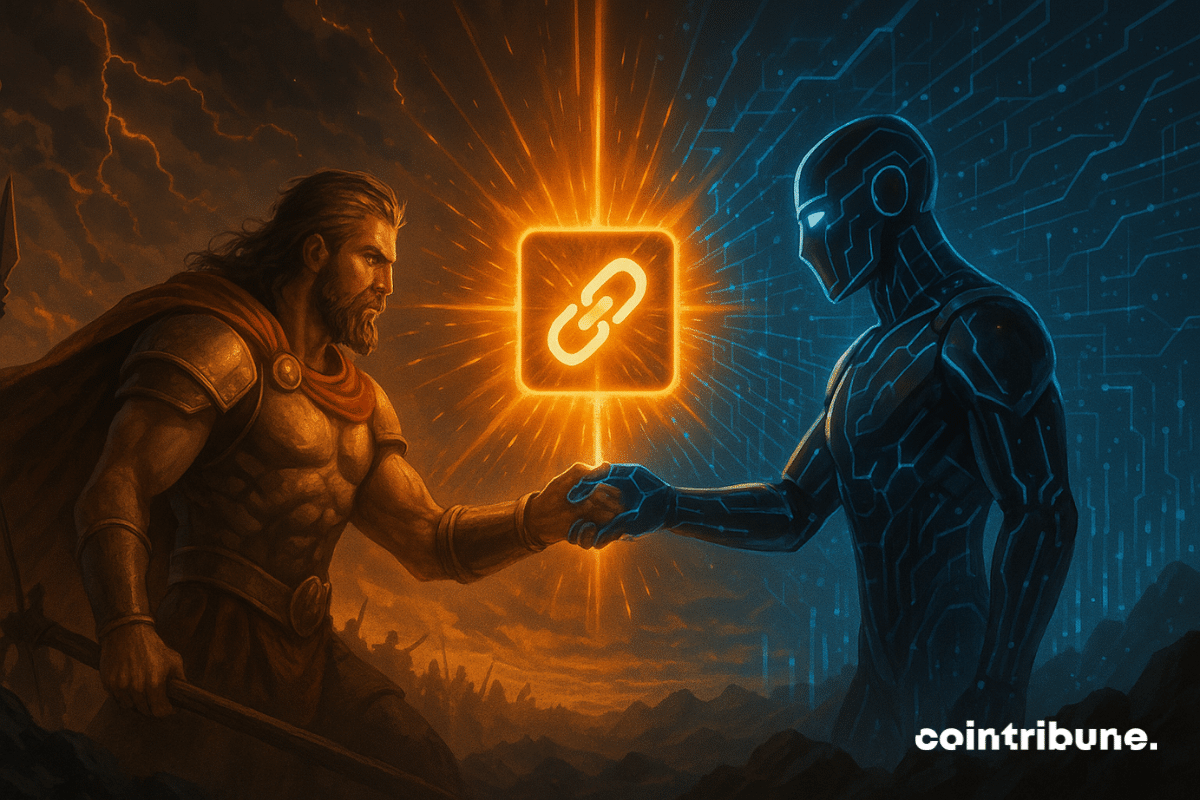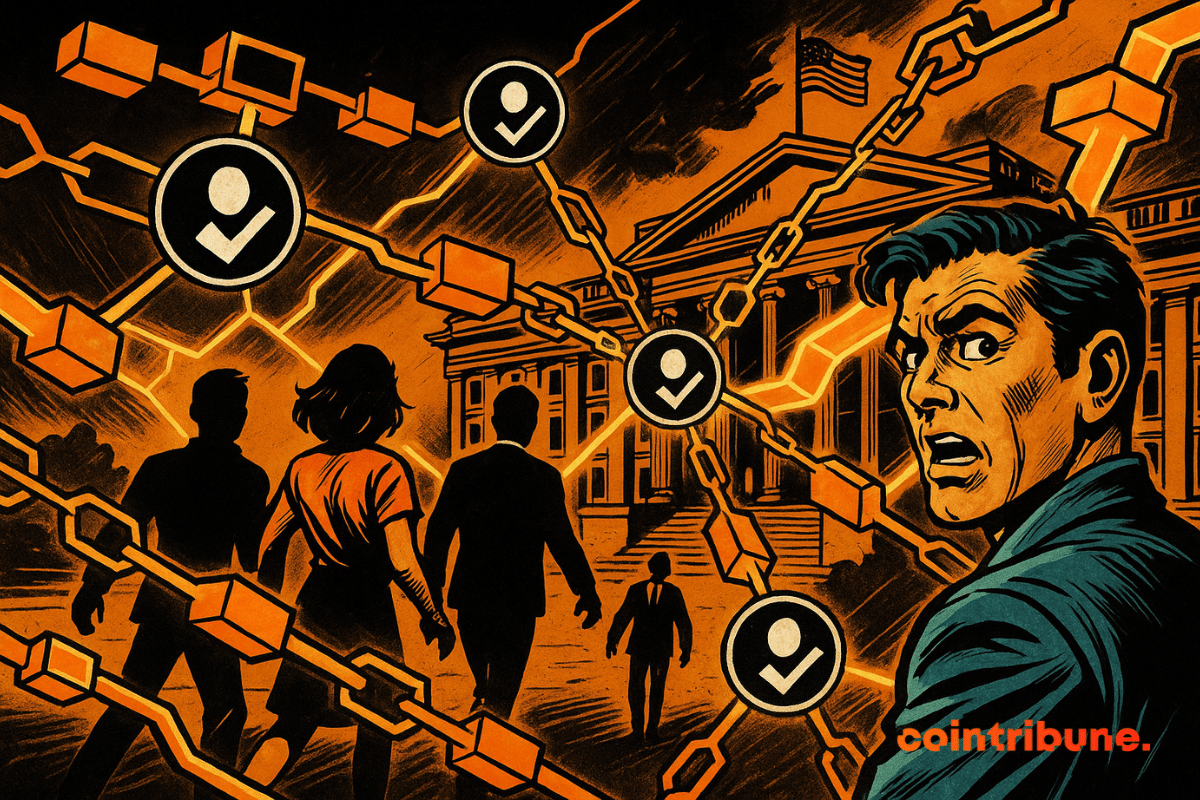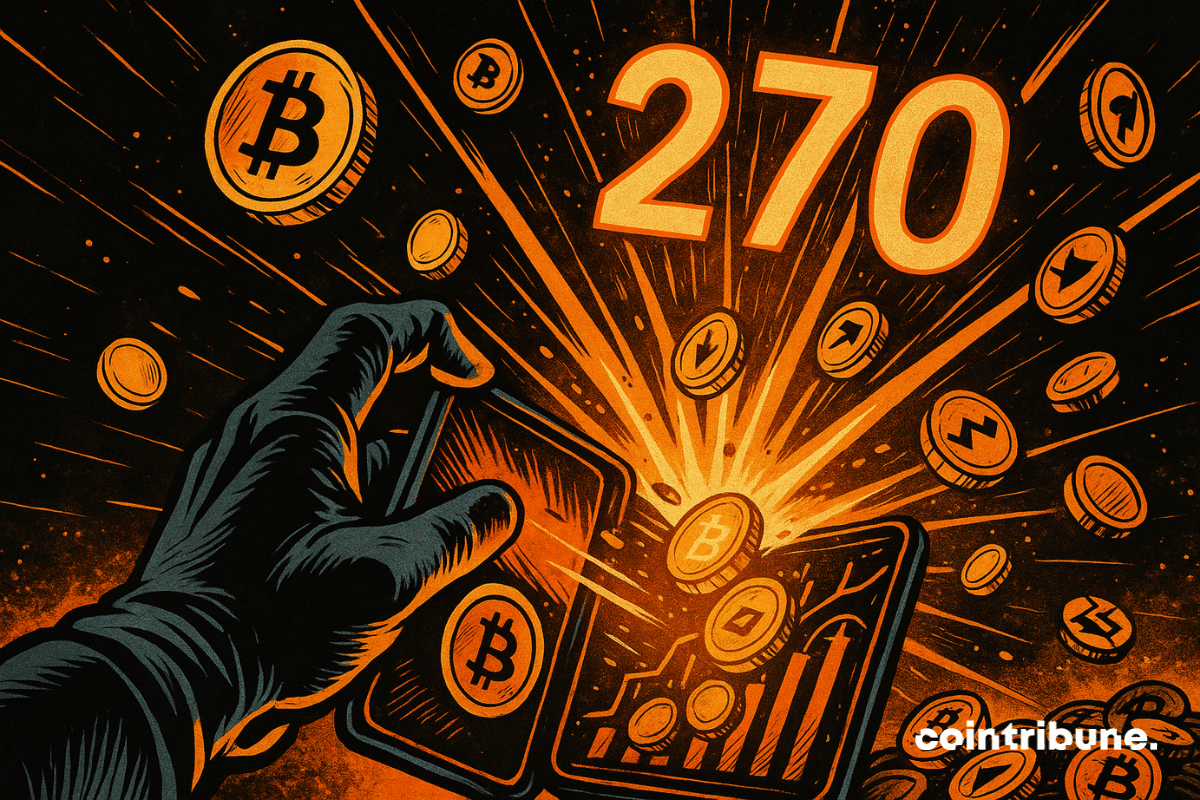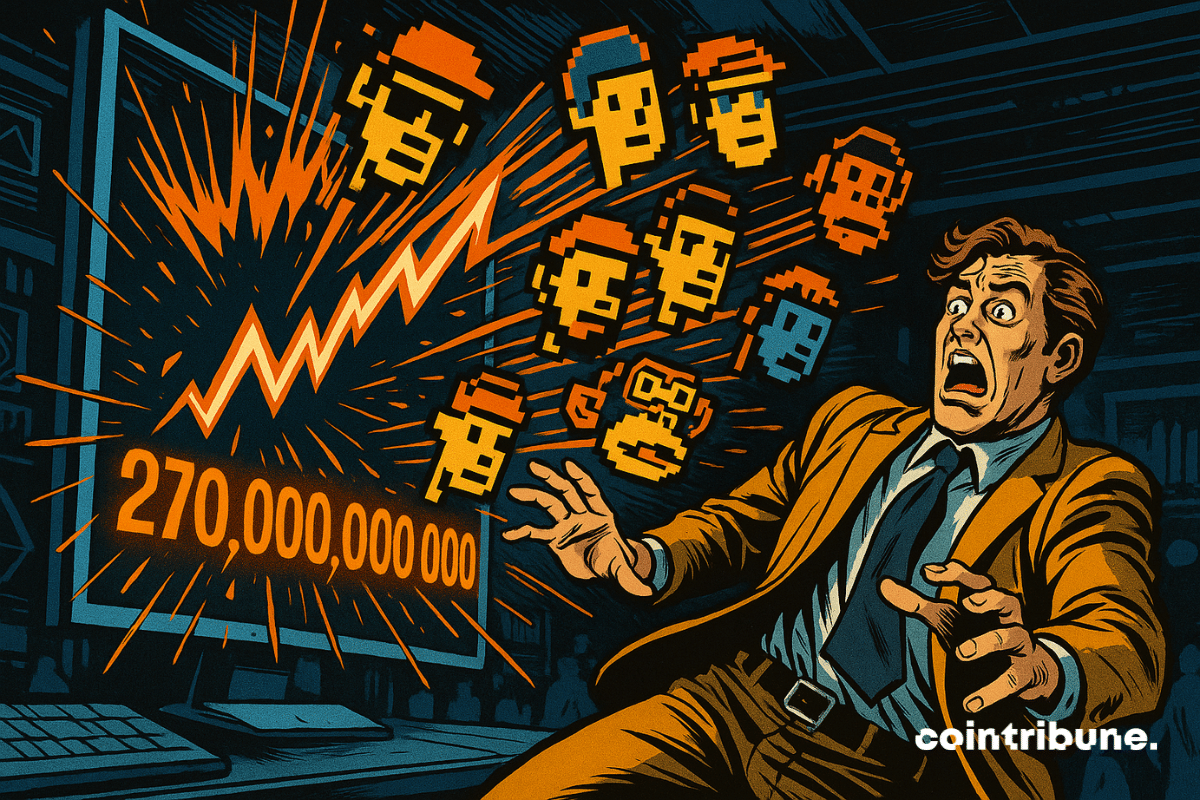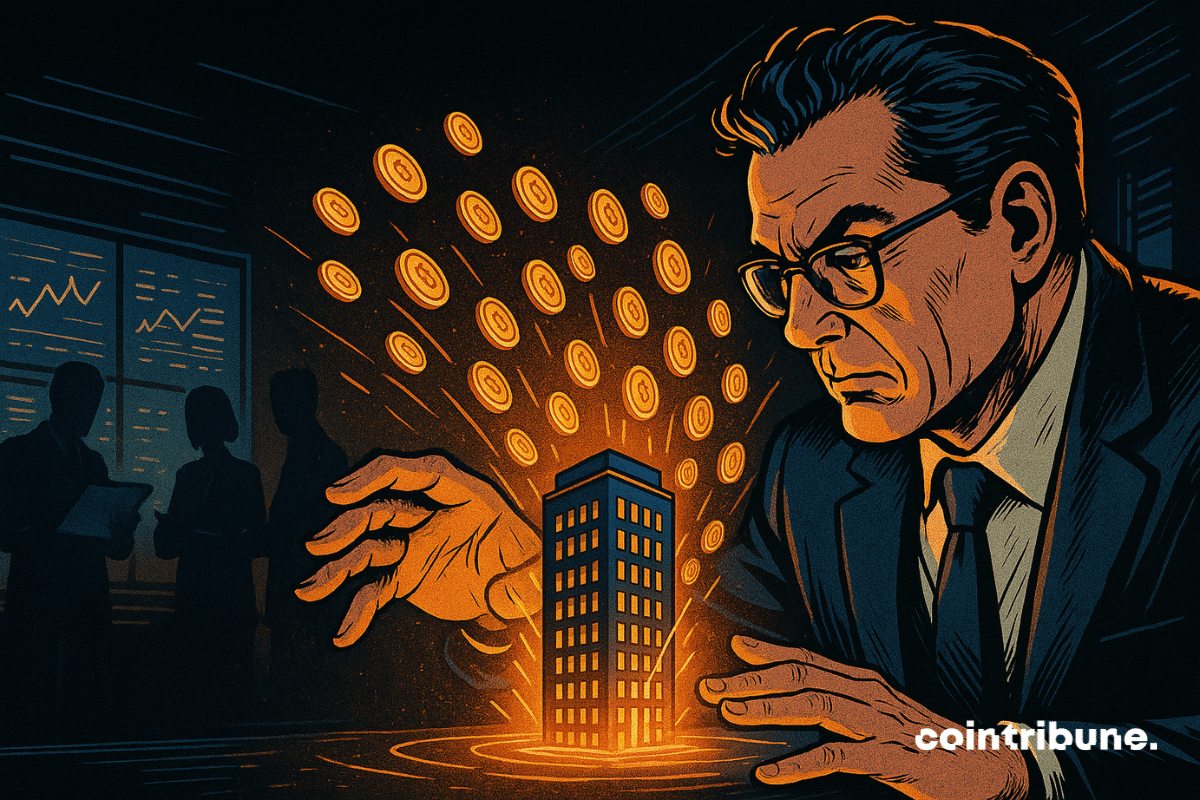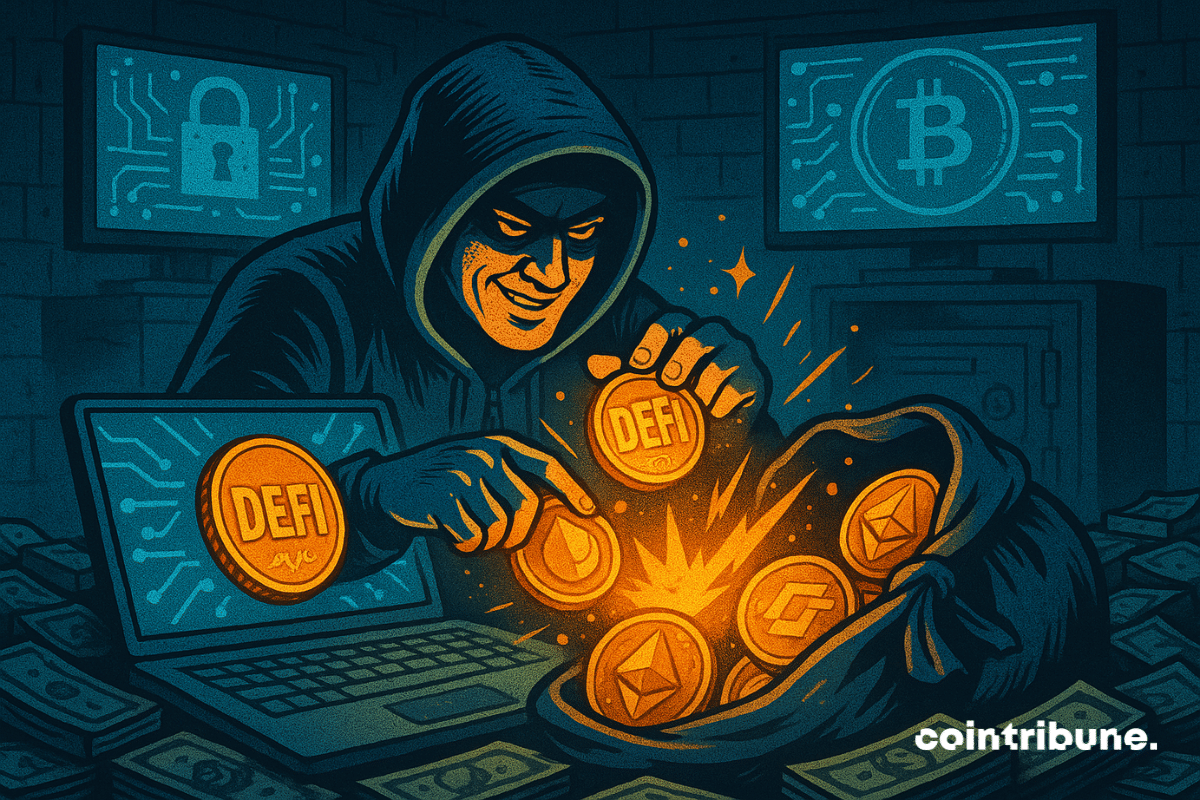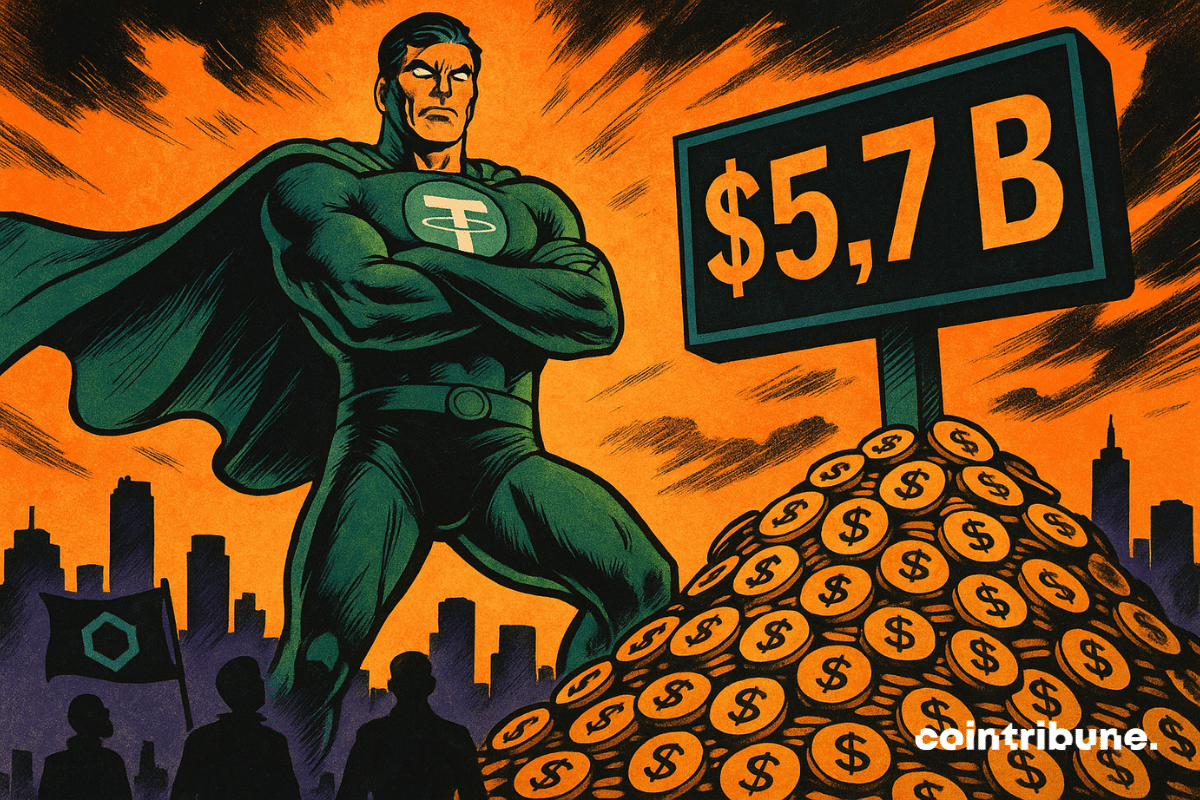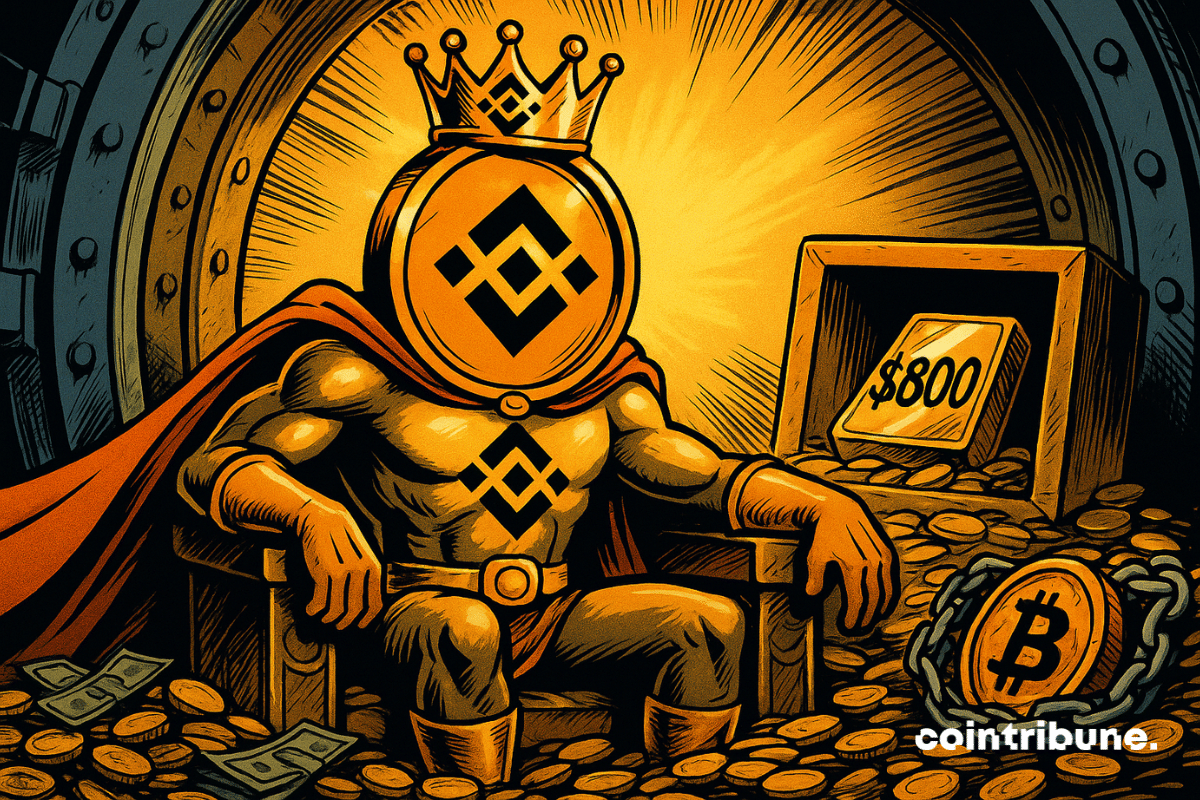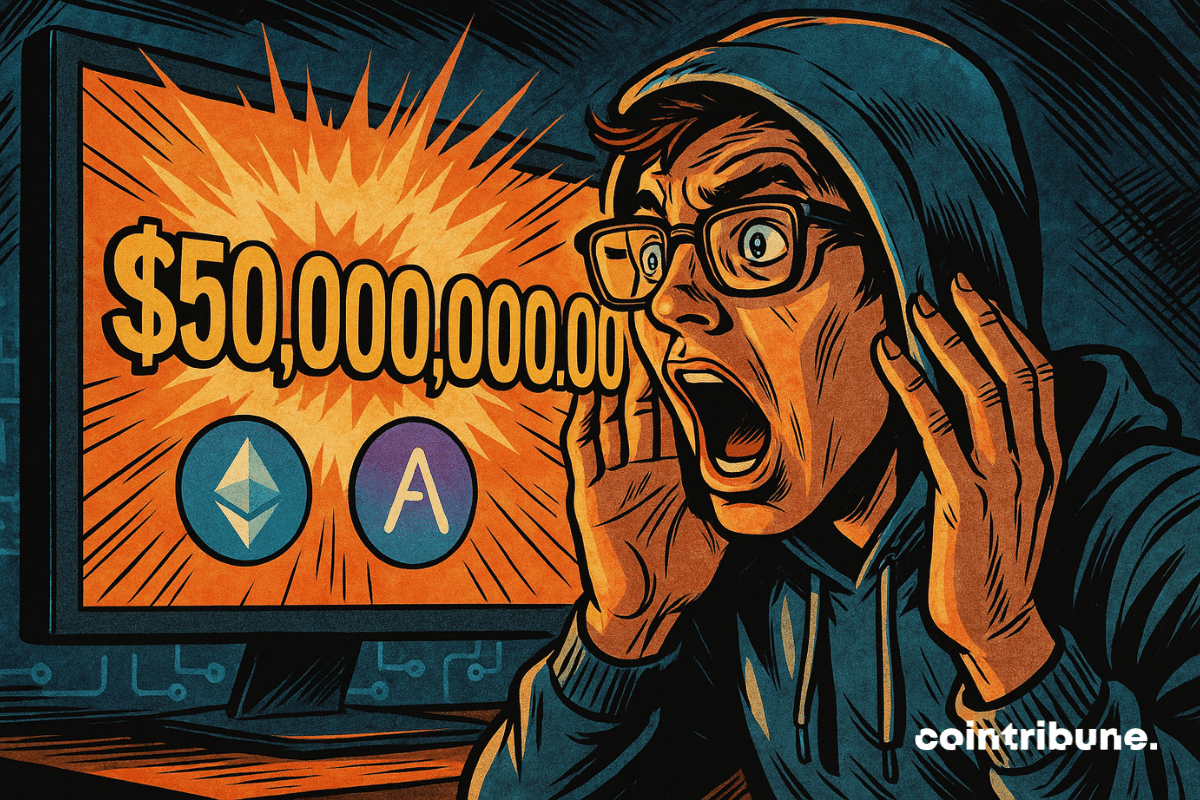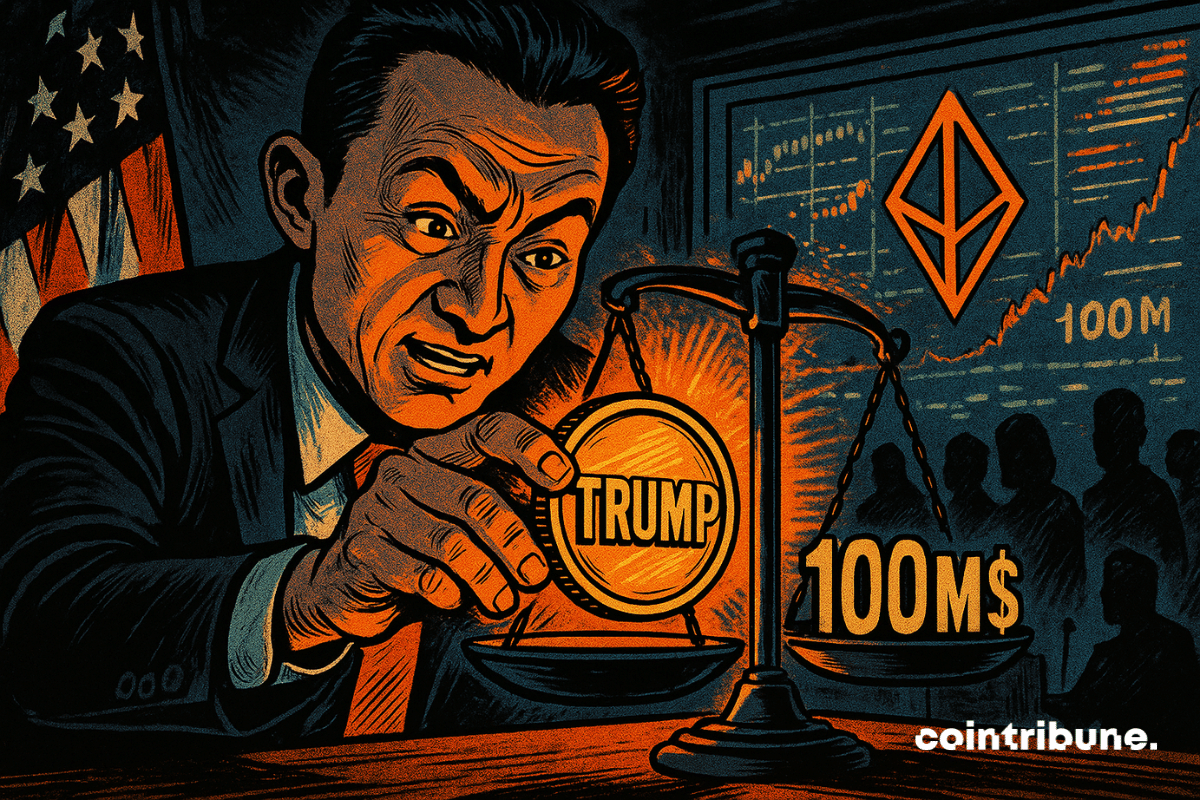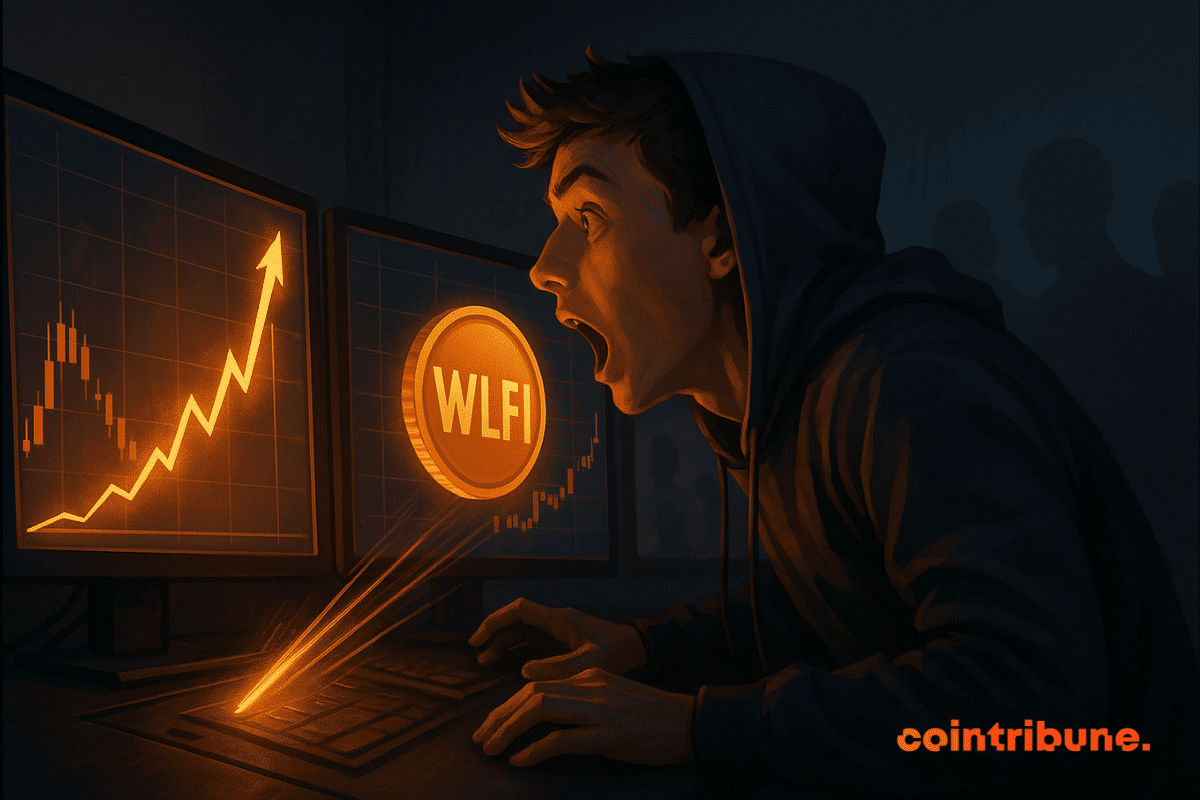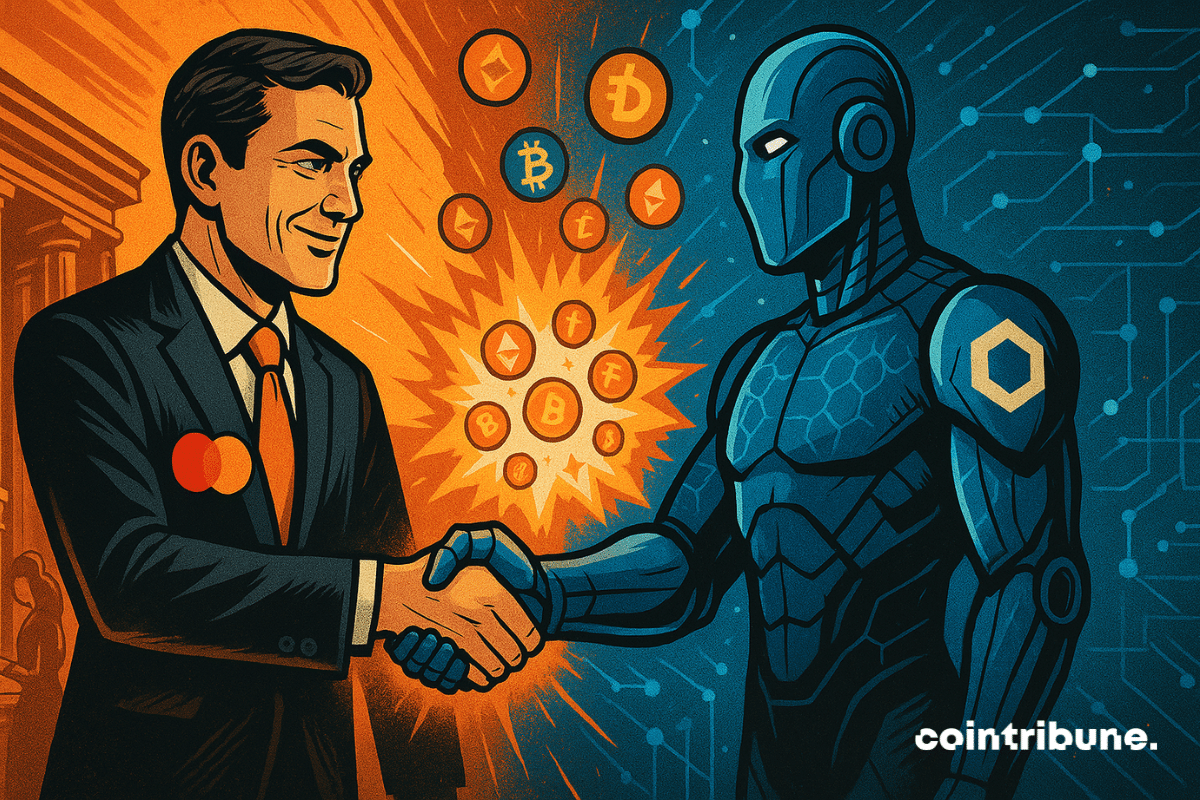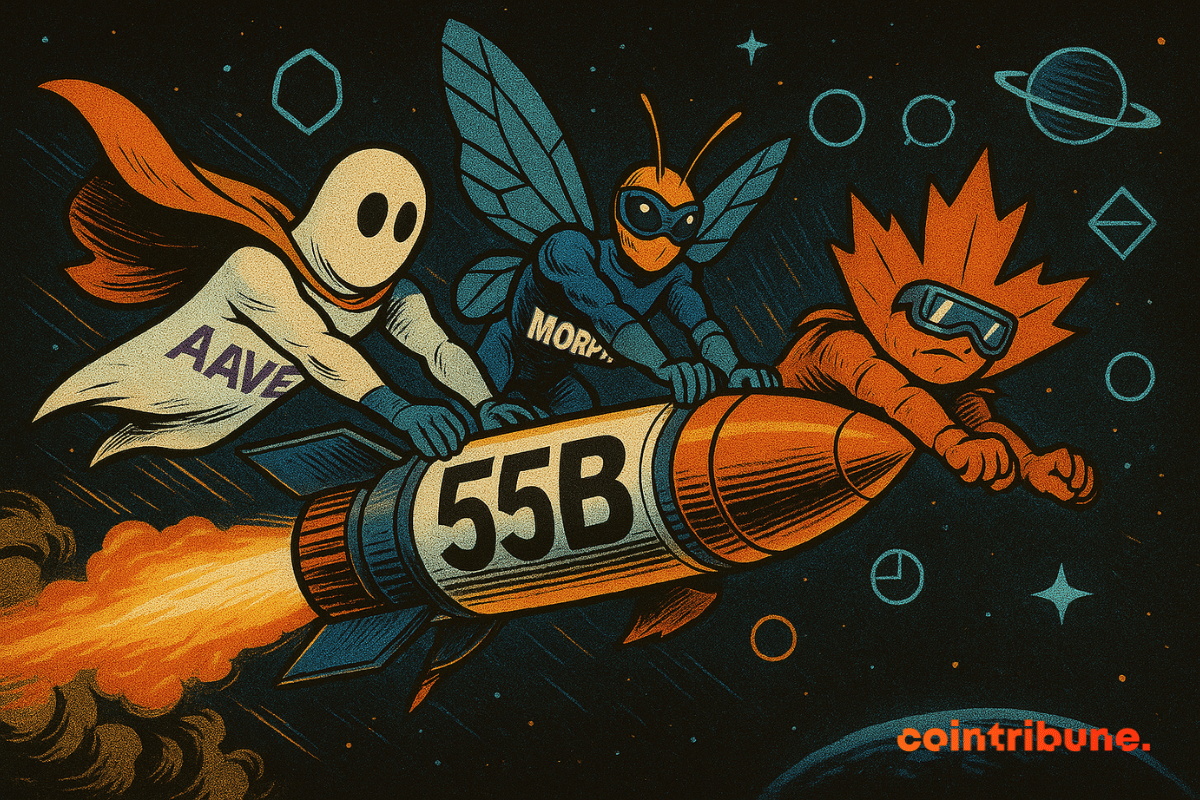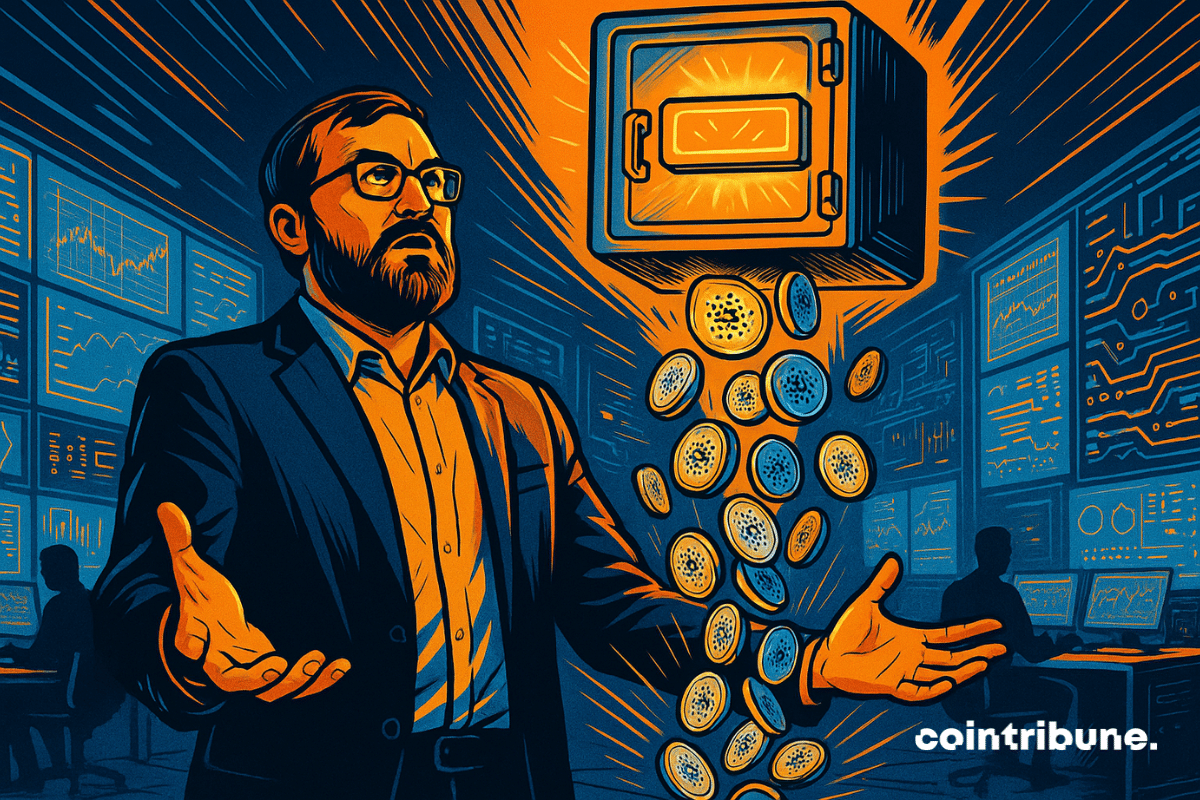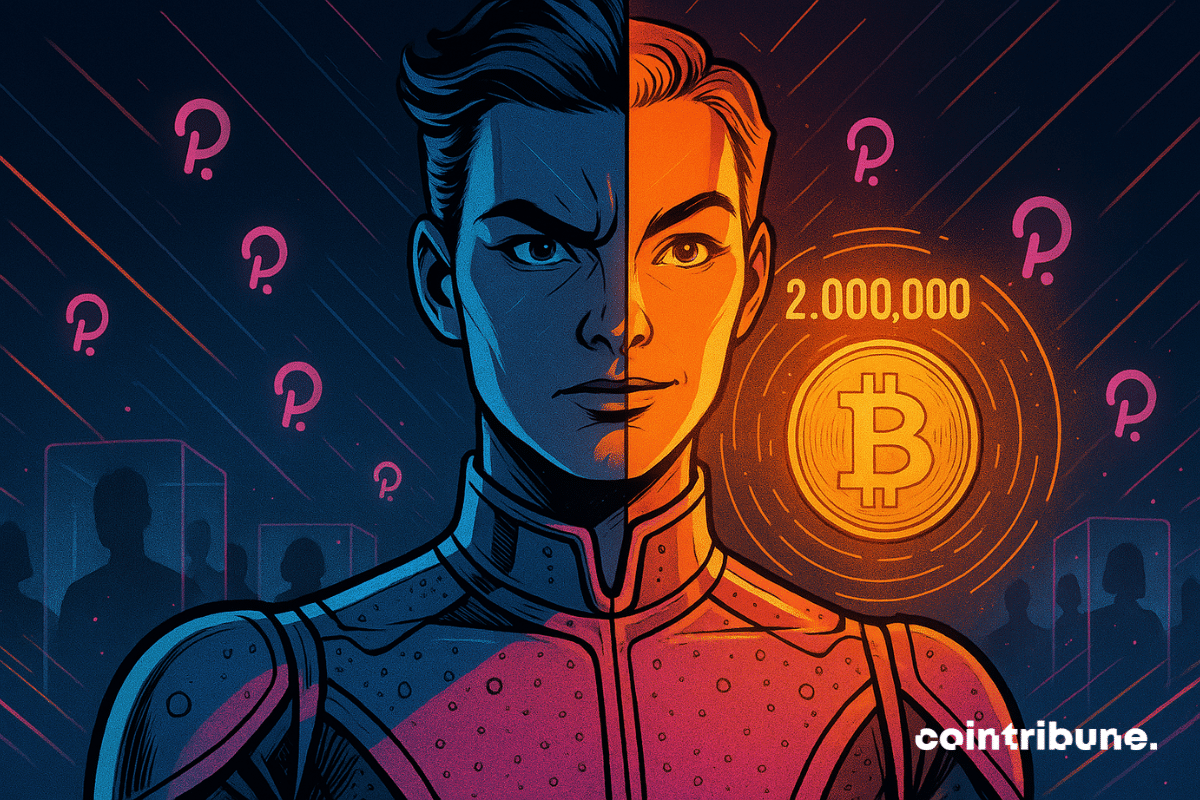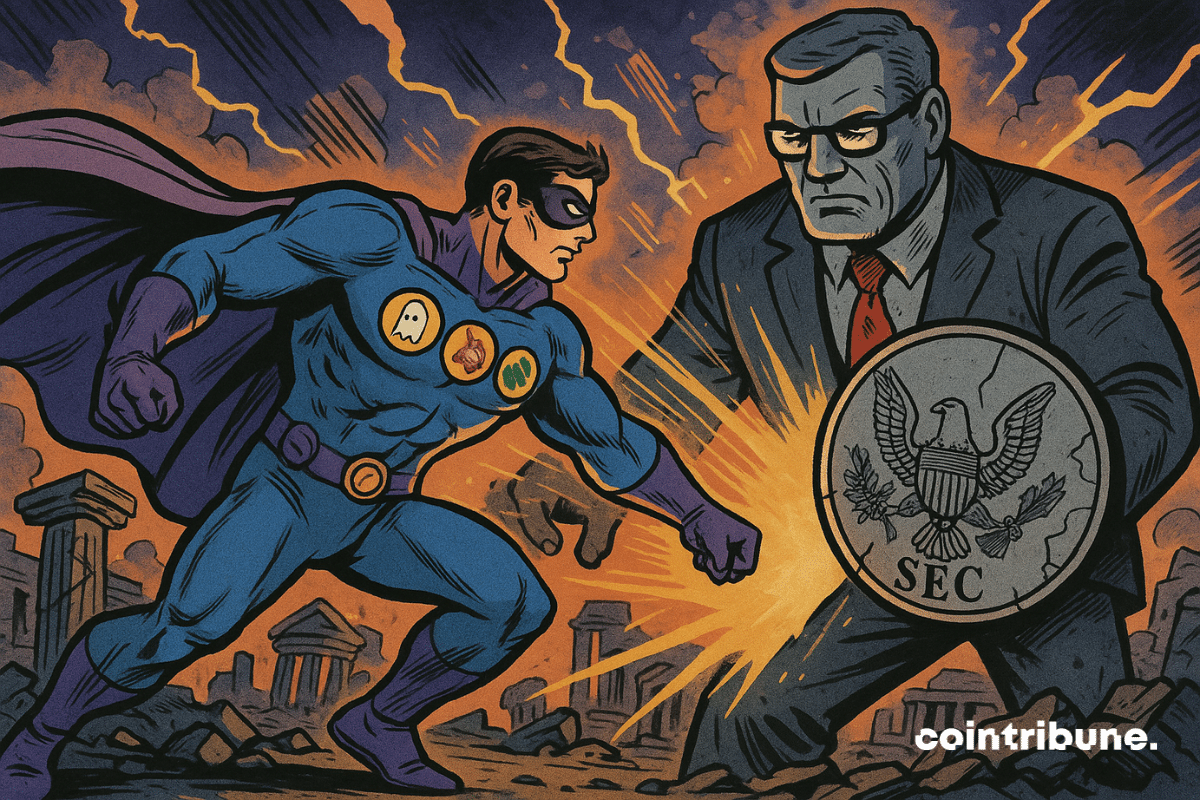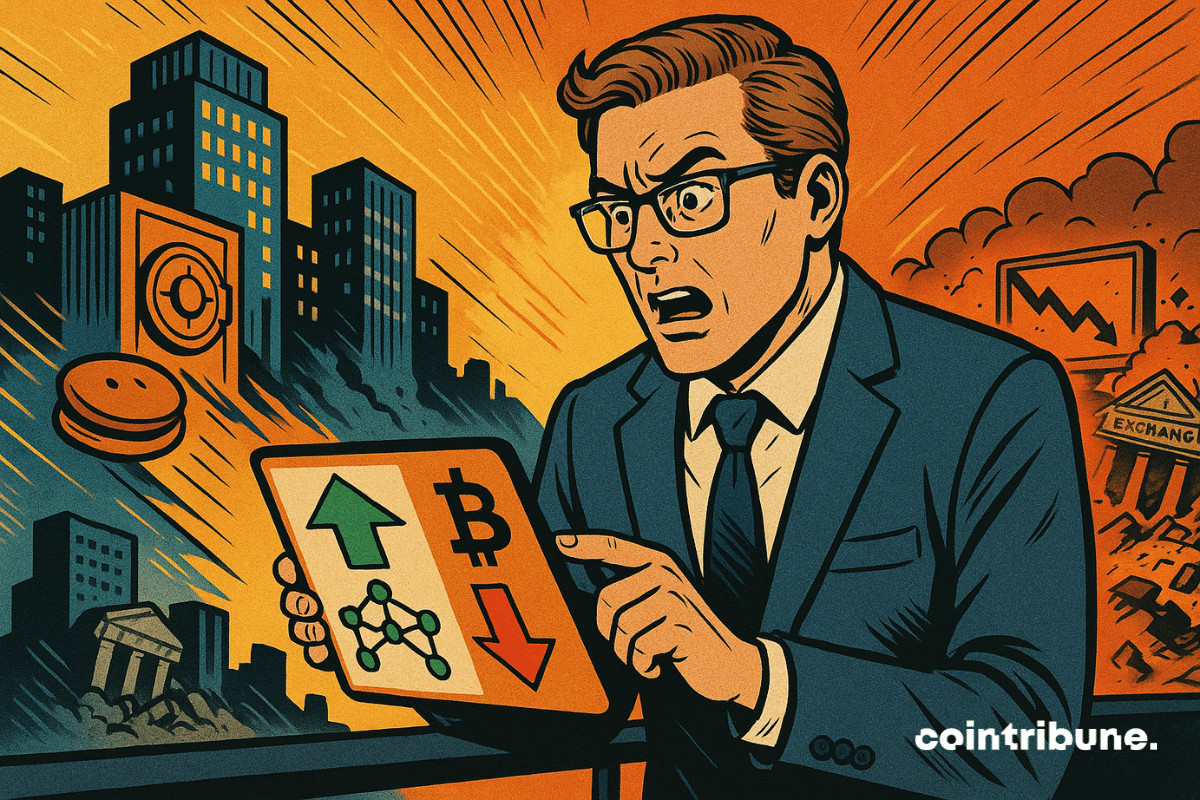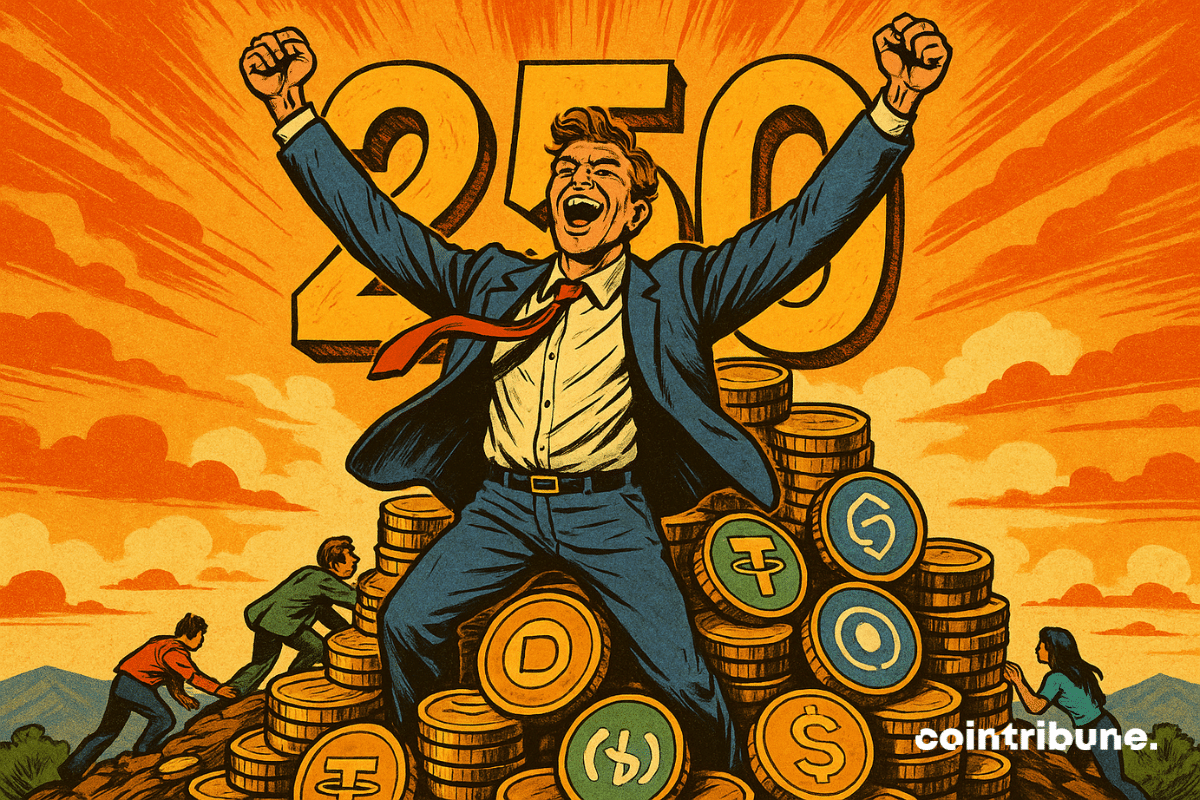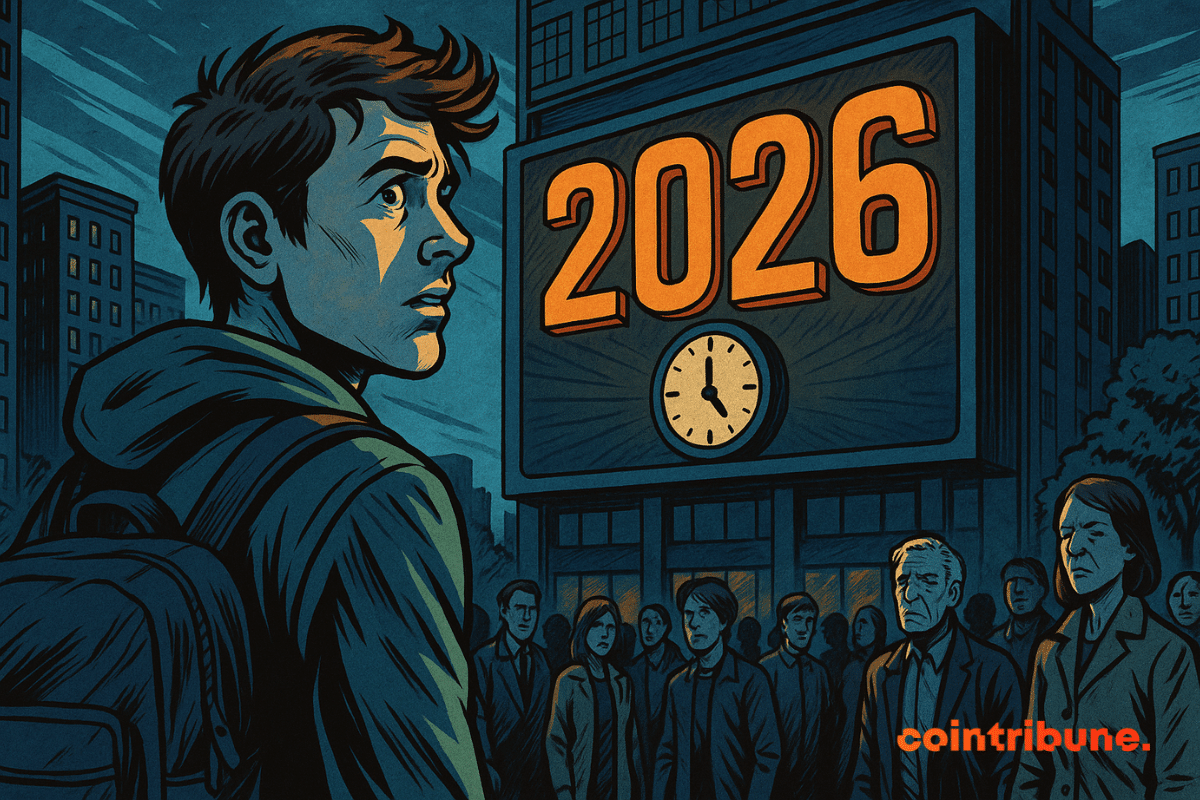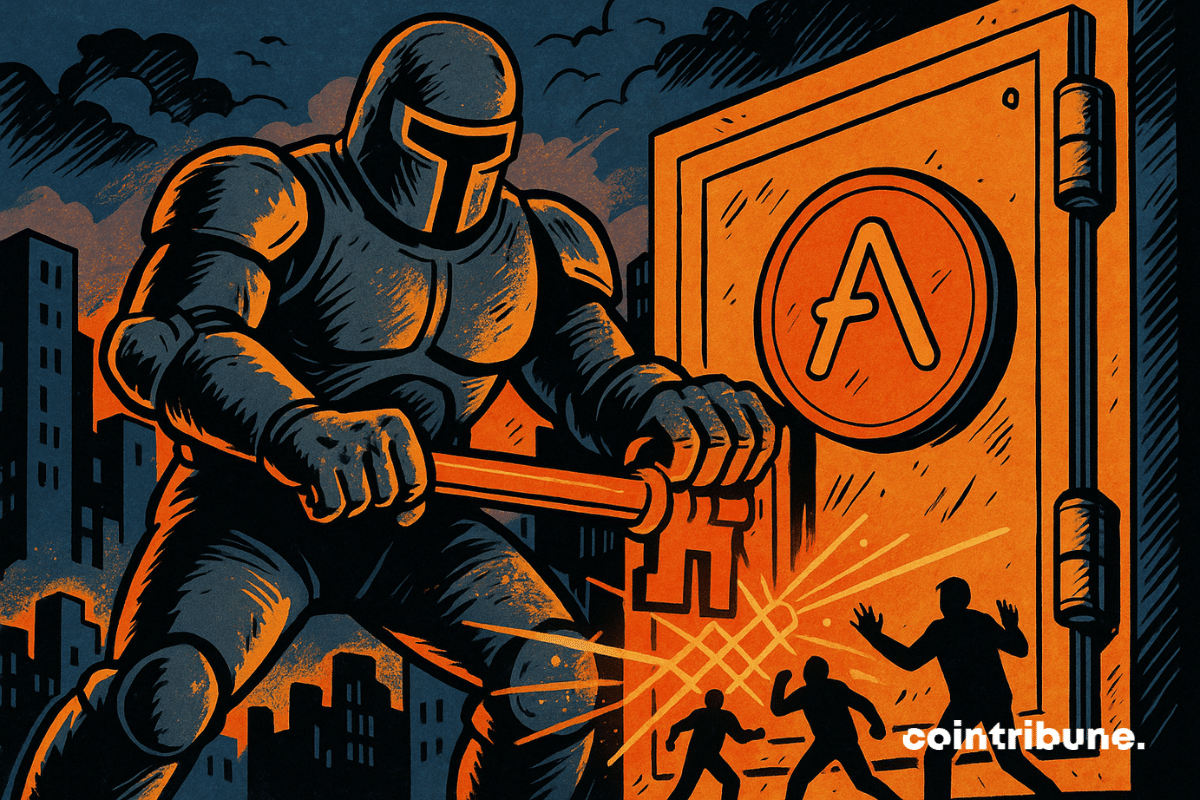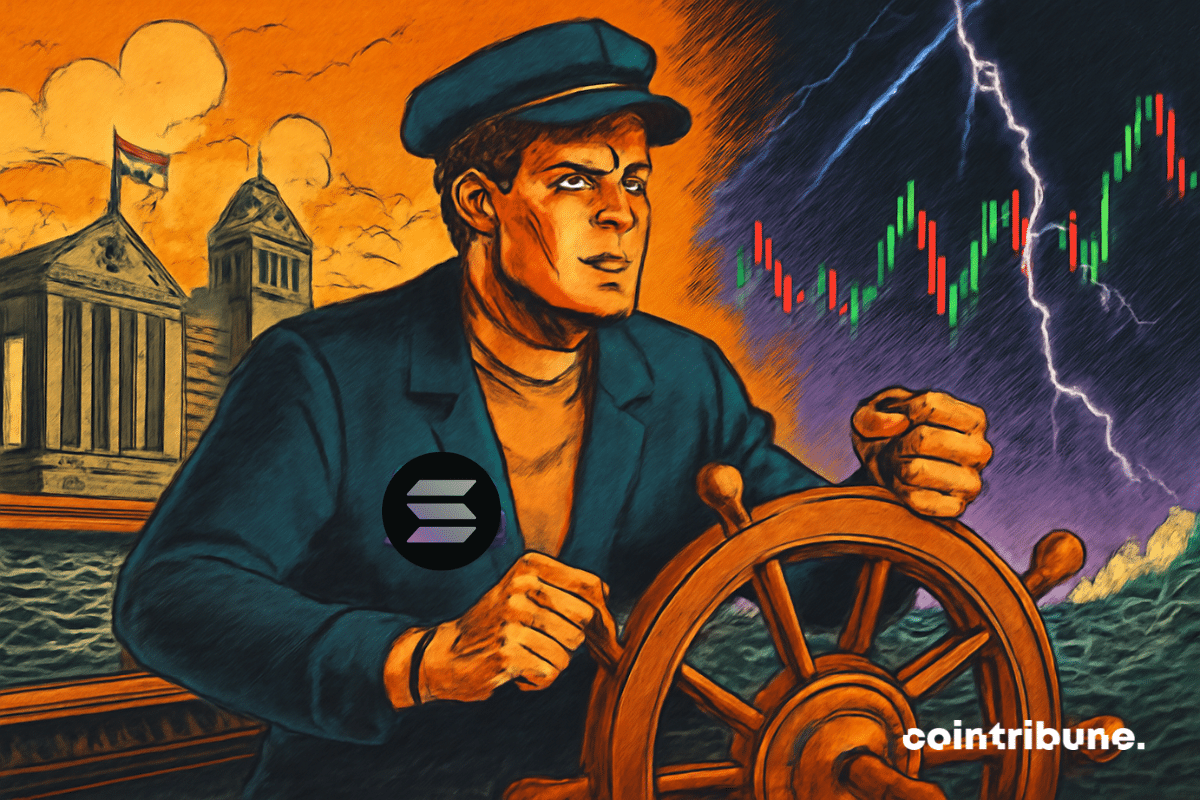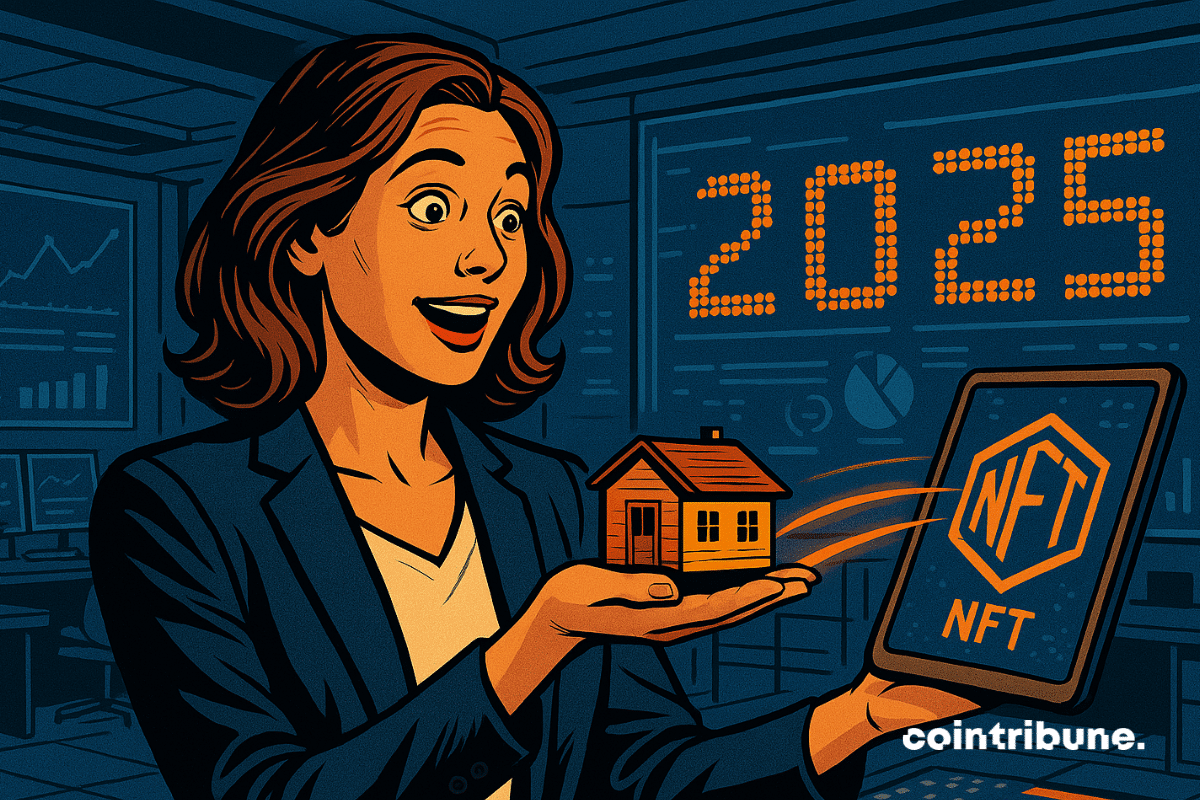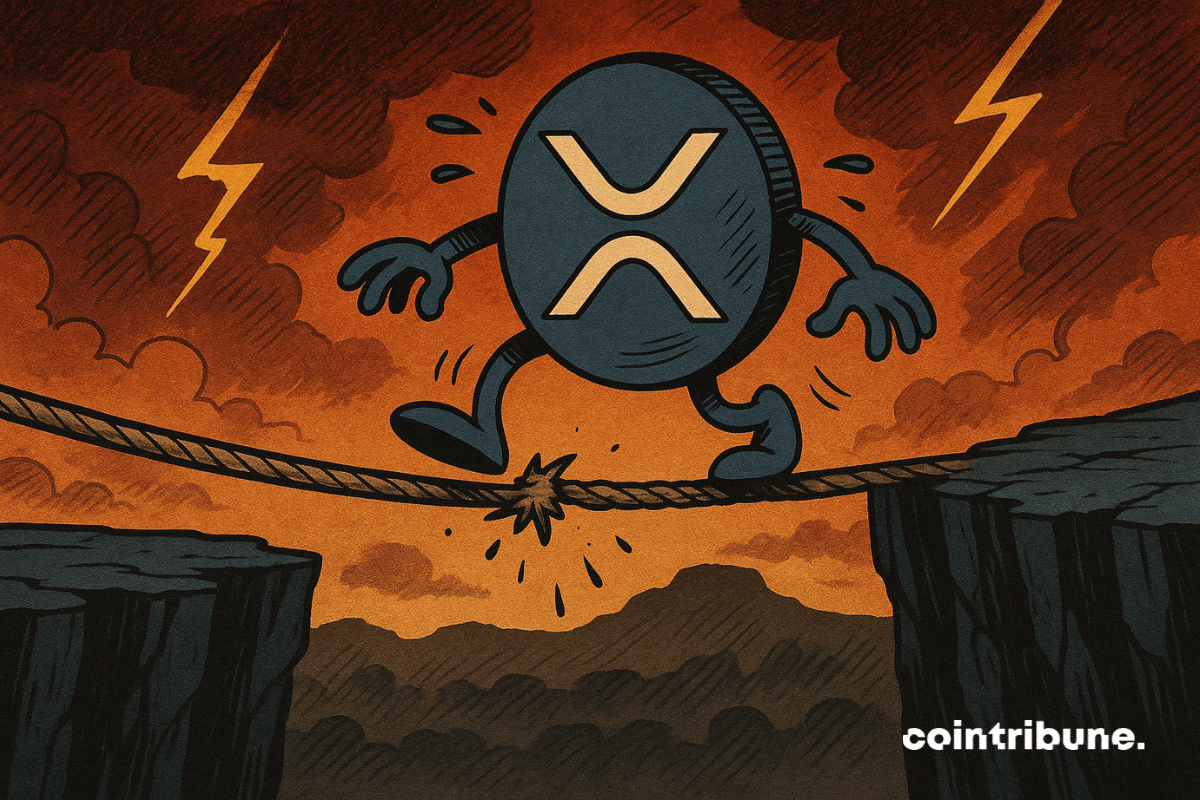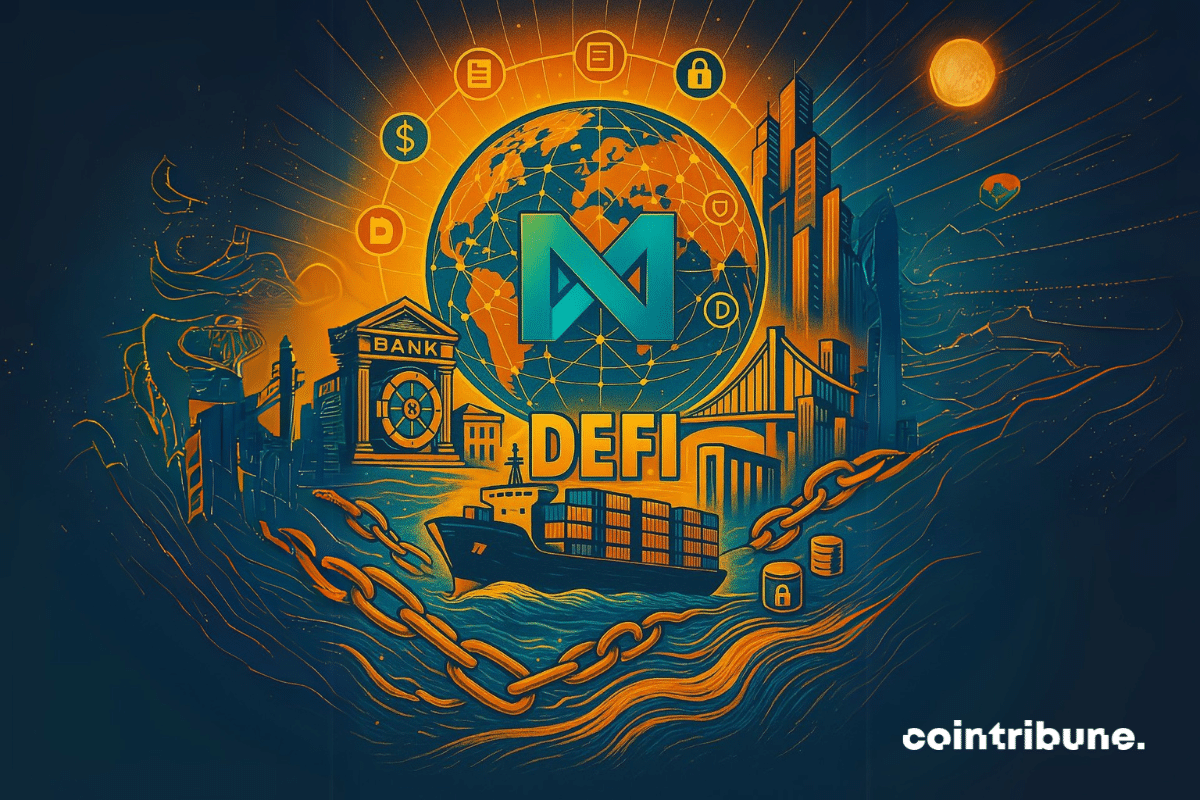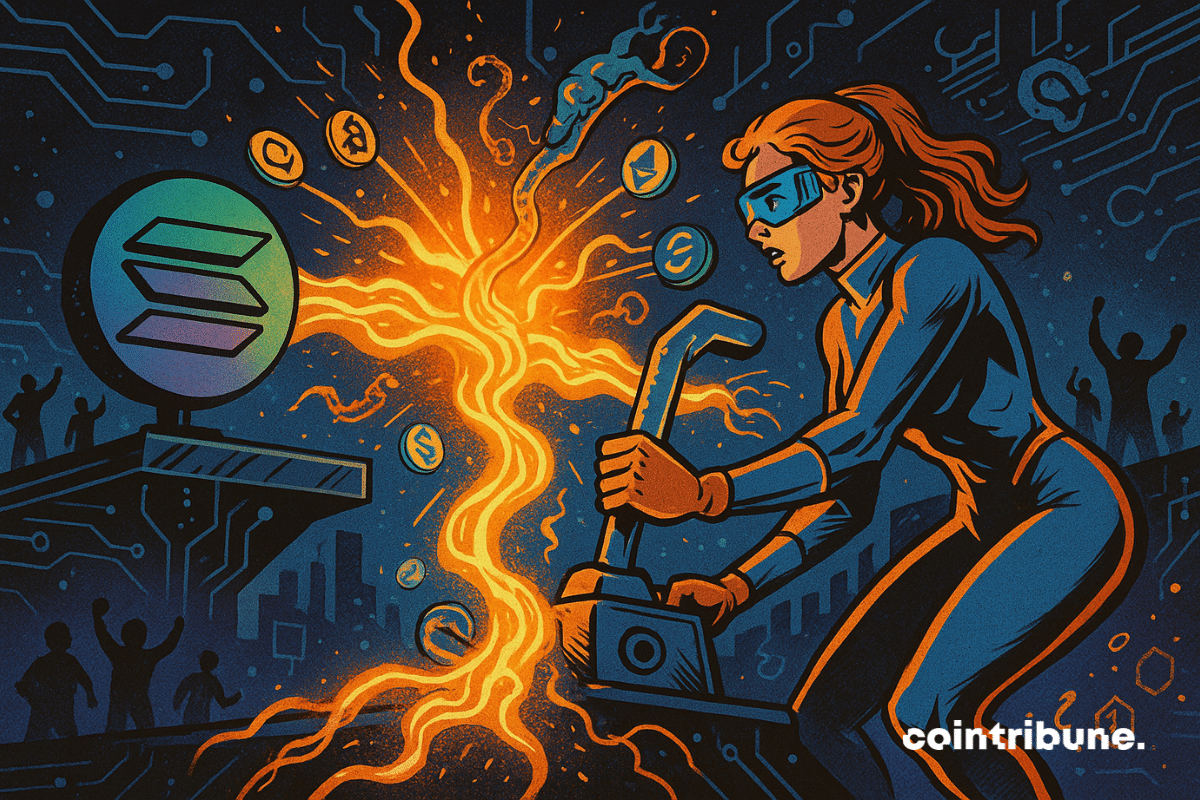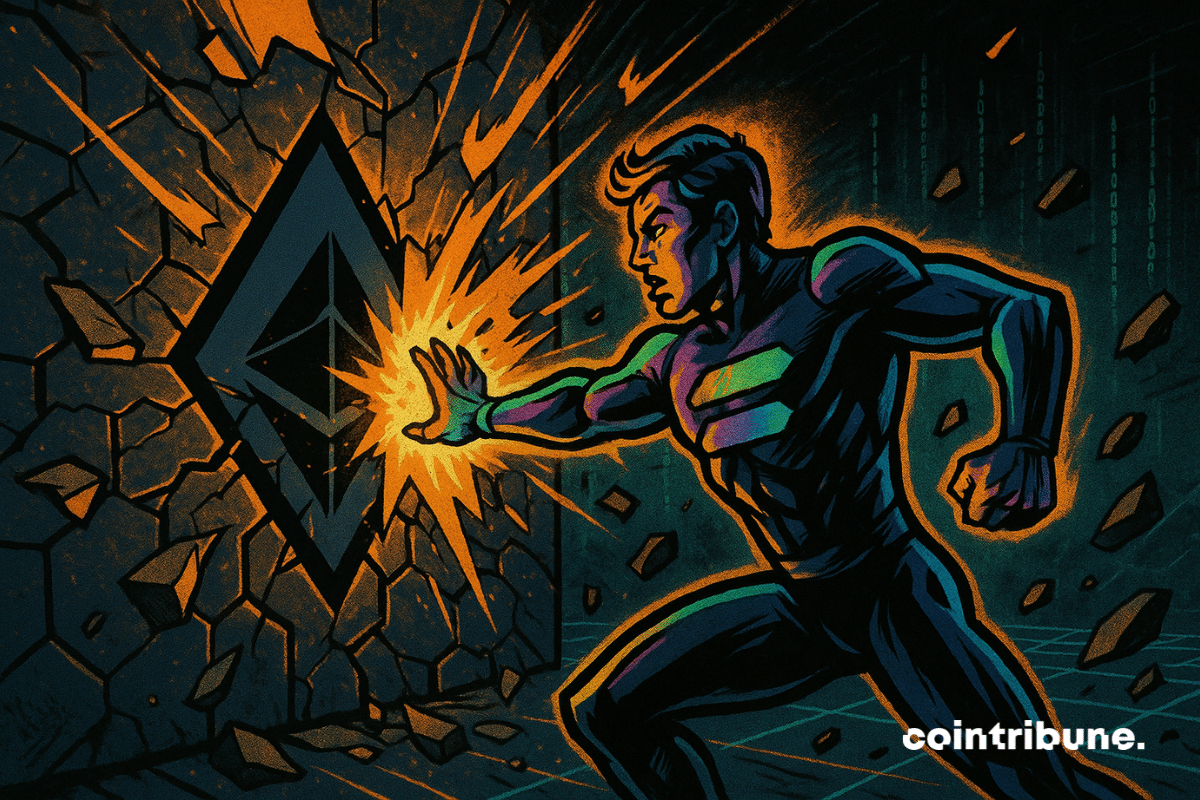The horrific universe of H.P. Lovecraft makes its way into the Web3 collectible card game ecosystem with "Call of Myth", the ambitious project from Kadath Studio. This competitive PvP CCG promises to revolutionize the genre through innovative mechanics, a fair economy, and full immersion in Lovecraftian cosmic horror.
Theme DeFi
The strategic partnership between Kadath Studio's Call of Myth and Immutable goes far beyond a simple technical agreement. This alliance symbolizes the evolution of Web3 gaming towards maturity, combining gameplay innovation with a blockchain infrastructure optimized for mainstream adoption. This collaboration could set a new standard for the industry by demonstrating how to overcome traditional decentralized gaming obstacles.
When Uncle Sam plays the DeFi watchdog: he quickly slips biometric identifiers into crypto contracts. Freedom takes a hit... or two.
The future of stablecoins is taking shape in this colorful and often unpredictable world of cryptos. Records are breaking one after another, driven by massive adoption and piling innovations. And while some see it as a simple fad, others bet that this wave will not stop anytime soon. The numbers speak for themselves... and they have rarely been so eloquent.
They were thought buried under the dust of the bear market… NFTs re-emerge, stealing the spotlight from DeFi. A plot twist or the beginning of a new crypto empire?
The tokenization of real assets (RWA) is no longer a laboratory experiment: it is a global undertaking that, quietly, is rewriting the way we own a building, a government bond, or a corporate debt. The idea is simple: to represent an economic right (rent, coupon, dividend) by a token registered on a blockchain, exchangeable at any time and, above all, programmable. But behind the apparent simplicity hides a legal, technical and financial mechanism that is refined month after month.
DeFi platform CrediX Finance has disappeared from the web following a $4.5 million exploit that drained its liquidity pools, prompting suspicions of a coordinated exit scam. The incident was first flagged on Monday by blockchain security firms, who found that the attackers gained control of the protocol’s multisig admin and bridge wallets six days prior. Using this access, they minted new tokens, posted them as collateral, and then siphoned liquidity from CrediX’s pools.
While some tighten their belts, Tether stacks billions in Treasury bonds. Crypto miracle or well-oiled cash machine? You be the judge, numbers to support.
While Bitcoin makes headlines, the discreet BNB is climbing quietly. An ATH that tastes of revenge? A crypto that works while others act like stars!
The decentralized finance giant Aave has just crossed a symbolic threshold by surpassing 50 billion dollars in net deposits. This historic achievement solidifies the protocol's position as the undisputed leader in DeFi lending. A major milestone that reflects both the maturity of the sector and its growing attractiveness to institutions.
The founder of Tron announces a purchase of 100 million dollars in TRUMP memecoins. This is not a risky bet. It is a political maneuver and a clear message sent to the crypto ecosystem.
American online NFT marketplace OpenSea has taken a major leap toward becoming an “on-chain everything app.” In a Tuesday disclosure, the NFT platform announced the purchase of Rally, a mobile-driven Web3 platform, thus bringing token and NFT trading to the doorstep of mobile phone users.
If MicroStrategy has popularized bitcoin as a store of value, SharpLink Gaming is revolutionizing the approach with Ethereum. The company holds $500 million in ETH, which it presents as the "fundamental layer of global finance." A strategy that goes beyond just being a store of value.
World Liberty Financial is preparing to make its WLFI token tradable while rolling out a stablecoin audit and a new app to simplify crypto use.
As the lines between traditional finance and blockchain become increasingly blurred, Mastercard and Chainlink are crossing a decisive threshold. In a partnership announced this Tuesday, they unveil a fiat-to-crypto conversion solution directly on-chain, designed for Mastercard cardholders. This initiative, far from being anecdotal, redefines access to cryptocurrencies and lays the groundwork for a new era of hybrid payments between traditional finance and Web3.
DeFi is booming, billions are piling up, Aave rejoices, Maple innovates, Morpho asserts itself... What if crypto credit became the true banker of Web3?
Cardano is launching a strategic offensive in the field of decentralized finance. Charles Hoskinson, its iconic founder, is proposing to invest 100 million dollars in ADA to boost the DeFi ecosystem of the blockchain. But will this ambitious initiative be enough to reposition Cardano against an increasingly aggressive and innovative competition?
Polkadot wants to trade its tokens for bitcoin in the midst of a cryptocurrency storm. A bold maneuver that shakes purists... and makes lurking maximalists smile.
Thanks to a more favorable attitude from the SEC, DeFi governance tokens are resuming their upward trend.
In May, cryptos are surging, RWAs are skyrocketing, and Binance declares: "All is well." But behind the numbers, a creeping tokenization is quietly disrupting traditional finance…
Crypto is entering a new era in the United States. The SEC supports self-custody and defends users' freedom. Details here!
No need for an IPO for Tether: while others seek funding, USDT prints its way. A cryptocurrency that breathes loud, very loud... but always behind closed doors.
"MiCA not even digested, here is Brussels already sharpening its axe against DeFi: another crypto-legislation to silence the rebel codes before 2026?"
Present since 2017 under the name EthLend, Aave reflects the transformation of DeFi. Indeed, five years after the DeFi Summer of 2020, during which decentralized finance emerged from its embryonic phase, this new economic sector has entered a new phase.
Solana is currently going through a consolidation phase between $164 and $185, oscillating around $174. Paradoxically, this technical pause is accompanied by a remarkable vibrancy of its DeFi ecosystem. Will this momentum be enough to propel SOL beyond its current consolidation zone?
NFTs have lost their magic, but tokenized real assets could give them a second wind. Is crypto playing its last card?
As the crypto market fluctuates between hopes of recovery and signals of caution, a discreet indicator draws attention: the evolution of staking on XRP. Despite recent upward movements, on-chain data reveals a clear decline in engagement on the XRP Ledger network. This disinterest, which contrasts with the apparent momentum of the crypto, could reflect a general loss of confidence among investors in the project's short-term viability.
The maritime industry, a pillar of global trade, has long been grappling with outdated financial systems. Companies must manage inefficiencies, slow processes, and fraud risks, complicated by the complexity of cross-border transactions and compliance with multi-jurisdictional regulations. These challenges limit access to capital, delay transactions, and lead to an overall lack of financial transparency. With traditional institutions hesitant to engage, the industry faces significant gaps in financial solutions.
Is the era of isolated blockchains coming to an end? This is, in any case, the strong signal sent by Chainlink, which has just activated its CCIP interoperability protocol on Solana. Thus, this integration marks a strategic turning point, both for technical infrastructures and for capital flows in DeFi. By connecting Solana to giants like Ethereum and BNB Chain, Chainlink is expanding its interoperable network to a non-EVM ecosystem, an unprecedented step with significant consequences for multi-chain markets.
In a crypto market saturated with promises, Solana imposes its numerical reality. Long seen as an outsider, the blockchain has just surpassed several heavyweight players in the sector, showing a record TVL, significantly rising fees, and sustained DeFi adoption. While SOL surged by 24.8% between May 6 and May 10, on-chain indicators confirm a strong momentum, far beyond just market effects.

